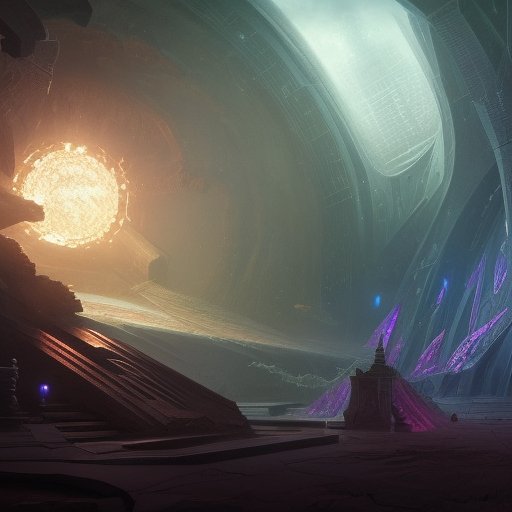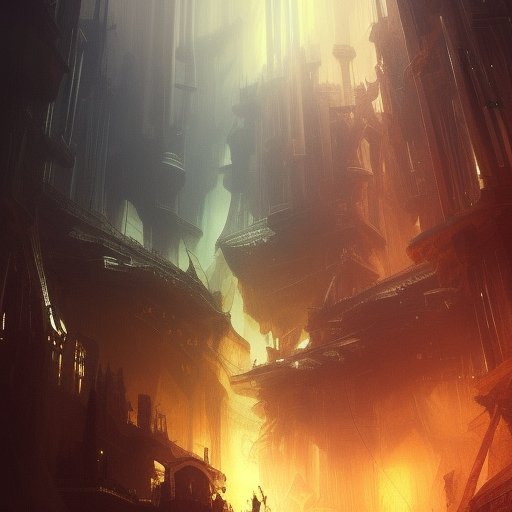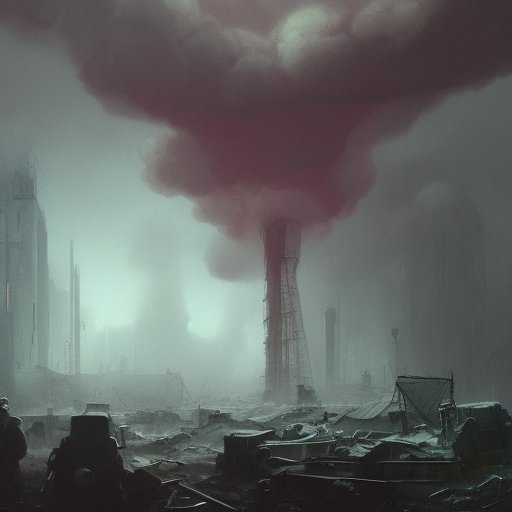
Buckle up, space travelers! In this article, we explore the consequences of shrinking the entire Earth to a tiny penny using red matter. We’ll delve into the science of this incredible feat and imagine a world where Earthlings have been reduced to miniature versions of themselves. From population displacement to environmental collapse, we’ll examine the challenges facing these tiny creatures. But it’s not all bad news; we’ll also explore the philosophical implications of shrinking our planet and what it means for our relationship with Mother Earth. So take a deep breath, strap on your space helmet, and join us on this wild sci-fi adventure!
I. Introduction
Ah, welcome to a mind-boggling thought experiment, my friends. A question for the ages: what if we shrunk the entire Earth to the size of a penny using red matter? Yes, I know what you’re thinking – sounds like something out of a science fiction novel, doesn’t it? But the thing is, it’s not as far-fetched as it seems. The concept behind red matter could make it a possibility someday.

Now, just imagine it for a moment. The whole of Earth – every mountain, every ocean, every forest – shrunken down to the size of a tiny coin. Buildings would be no bigger than matchsticks, and cars could fit in the palm of your hand. But what would it mean for the people and creatures that inhabit this brand new world?
In this thought-provoking piece, we’re going to explore the implications of shrinking the Earth to this degree. We’ll delve into the science behind it, examining the concepts of red matter that could make it possible. From there, we’ll examine the broader consequences – the population explosions, the environmental disasters, and the devastating consequences of shrinking a planet to such a minuscule size.
Beyond that, we’ll look into what life could be like for the Earthlings that find themselves in this new, miniature world. What challenges would they face on a day-to-day basis? Would their society and culture change in strange and unexpected ways?
But it’s not all fun and games, my friends. We’ll also explore the potential dangers of shrinking the Earth too far – the catastrophic outcomes that could result from pushing this incredible experiment beyond its limits.
So buckle in, dear readers, as we explore the fantastic and bizarre world that could exist if we dared to shrink our planet to the size of a penny – using nothing but red matter, of course.
II. The Science of Shrinking
Red matter – a substance that sounds like it’s been plucked straight out of a pulp sci-fi novel. If you’re unfamiliar with this mysterious material, then prepare to have your mind blown. It’s a theoretical form of matter that could potentially be used to shrink the Earth to the size of a penny, by manipulating the fundamental laws of physics.

At its core, red matter is a hypothetical substance that theoretical physicists believe could exist. According to some theories, it’s a type of exotic matter that could be used to create a stable wormhole, allowing travel between different points in time and space. It’s still pure speculation at this point, mind you – we’ve yet to find any concrete evidence to prove that red matter exists.
But let’s assume for a moment that it does exist. If so, then it could be used to manipulate the fabric of space and time, causing massive distortions in the spacetime continuum. By compressing the Earth down to the size of a penny, all of the matter that currently occupies its surface area would be condensed into an incredibly tiny space.
It’s not hard to imagine that this would result in some truly crushing pressures, as the gravitational forces of the entire planet are compressed down into such a tiny space. However, since we’re talking about a high-level concept like red matter, the exact details of how this would work are hard to fathom.
III. Hey, Where Did Everyone Go?
Where did everyone go, you ask? Well, shrinking the Earth to the size of a penny would have some major consequences, let me tell you. Let’s start with the most obvious one – population displacement. Everyone would have to pack up and move into new, miniature accommodations. Cities would be crammed into tight quarters, and there would be far less space for nature and wildlife.

But that’s not all. Shrinking the Earth could also lead to environmental collapse. For one thing, the land area would be significantly reduced, meaning there simply wouldn’t be enough room for all the existing plant and animal species to thrive. The natural balance of ecosystems could crumble, leading to the extinction of countless species.
And on a more practical level, waste management would become a massive problem in this brave new tiny world. With no room to dispose of garbage, it would start piling up pretty quickly. Not to mention the fact that the Earth’s natural resources would be strained to the breaking point – from fresh water sources to critical minerals and metals, everything would be in short supply.
Put simply, shrinking the Earth would be a massive undertaking, and not one to be taken lightly. The consequences would be far-reaching and unpredictable, leaving us with a brand new world that we would have to learn to navigate all over again.
So, while the idea of a tiny, shrunken Earth may seem like an exciting and intriguing concept, we must also consider the potential drawbacks and risks that would come with such a venture. Remember, the world we know is a delicate ecosystem, and tampering with it could have serious repercussions.
IV. A Brave New World
Ah, the brave new world that awaits us, should we take the leap to shrink the Earth down to the size of a penny. It’s a world full of wonder and challenges, brimming with new opportunities and new obstacles to overcome.

For starters, everything would be so much bigger! The smallest obstacles would become massive hurdles for the tiny Earthlings, from curbs to staircases, and everything in between. But they would make do, adapting to this new world with their ever-present ingenuity and determination.
Speaking of adapting, the flora and fauna of this new world would be entirely different from what we know on Earth. Tiny blades of grass would become towering forests, and ants would be like colossal creatures roaming over the landscape. The Earthlings would need to find new ways to interact with all these new life-forms, and finding creative solutions to navigate through this vibrant world.
And on top of it all, they’ll need to find ways to sustain themselves – food, water, shelter, and other necessities will all be in short supply in a world that’s been shrunk to such a small size. They’ll need to innovate and create new ways to grow crops, manage water supplies, and build homes that can keep them safe from the myriad dangers of this new world.
But amidst all the challenges, there’s a sense of excitement and wonder – this new world has so much potential. New technologies and tools, new ways of thinking and seeing the world. The tiny Earthlings will no doubt create their own unique culture, with their own triumphs and tragedies, their own great leaders and heroes.
It’s a world teeming with possibilities – and who knows, maybe it’s a world we’ll one day get the chance to explore firsthand. Until then, we can only imagine the incredible journey that awaits should we ever make the leap to shrink the Earth to a penny using red matter.
V. A Penny for Your Thoughts
When you stop and think about it, shrinking the Earth to the size of a penny has some pretty significant philosophical implications. What does it say about our relationship with our planet that we would be willing to experiment with its very existence in this way? Is it a sign of our hubris, our irreverence, or our mind-bending creativity?

Of course, opinions on this matter may vary. Some might see it as a sign that we’re willing to take bold steps to understand the world around us, even if that means pushing our limits and experimenting with some pretty crazy ideas. Others might argue that it’s a sign of our shortsightedness, our lack of respect for nature and its inherent complexity.
Beyond that, shrinking the Earth also has some pretty deep implications for our understanding of the universe as a whole. If we’re able to play god with our own planet, what does that say about the broader universe we inhabit? Is it possible that there are other planets out there that are already like ours, shrunk down to impossible sizes by some higher power?
Ultimately, we can’t answer all these questions definitively. But what we can say is this – shrinking the Earth is a symbol of the limitless potential of human curiosity and imagination. It’s a sign that we’re willing to ponder even the most outrageous ideas in our quest to understand the universe around us. So whether you’re for it or against it, there’s no denying that shrinking the Earth is a bold and thought-provoking idea that has far-reaching implications for our sense of self, our relationship with nature, and our very place in the universe.
VI. Whoops, We Shrunk Too Far
But what happens if we push the limits of shrinking the Earth too far? The consequences could be dire. Let’s consider the ramifications of over-reducing our planet.

First, the Earth’s gravity would start to decrease dramatically. As the mass of the planet shrinks, so does its gravity, leading to a dangerous reduction in atmospheric pressure. This, in turn, would trigger an atmospheric cascade, which could have a devastating trickle-down effect on the planet’s climate and ecology.
As the planet approaches microscopic sizes, simple things like bacteria, microbes, and viruses – all of which we depend on for survival – would become a genuine threat to our existence. Airborne diseases could mutate faster, leading to an outbreak of epidemics and pandemics that we would be powerless to combat.
On top of that, the reduced size of the planet would have an enormous impact on the tides and weather patterns, leading to potentially catastrophic weather phenomena like super-storms and tsunamis.
Finally, we come to the existential threat of shrunken Earth. At a microscopic size, our planet could be the target of threats from beyond our galaxy. Even small objects, like meteoroids and dust particles, could inflict catastrophic damage to our tiny world.
VII. Conclusion
And so we come to the end of our journey, dear readers. We’ve explored the strange and intriguing world that might exist if we could somehow shrink the Earth to the size of a penny. We’ve examined the science behind this incredible experiment, and contemplated what it would mean for the creatures and people that call this new world home.

But what are the takeaways from this bizarre thought experiment? For one, it reminds us just how fragile and vulnerable our planet really is. As tiny as we might seem in the grand scheme of things, our world is a massive and complex place, filled with countless interdependent ecosystems and delicate balances. And as we push our planet to its limits with pollution, climate change, and other forms of environmental destruction, we risk throwing those delicate balances into disarray – with devastating consequences.
But beyond that, shrinking the Earth also reminds us of the incredible resilience of life. No matter how much we might abuse the planet, life finds a way to survive and thrive. From the tiniest bacteria to the most complex multicellular organisms, living things are endlessly adaptable and creative – and that gives us hope for the future.
So as we sign off and leave you to ponder the strange and intriguing world of a penny-sized Earth, remember this: we hold the fate of our planet in our hands. And while the future may be uncertain, we have the power to steer it in a positive direction – leading to a world that’s vibrant, diverse, and filled with life in all its many forms. So keep dreaming big, my friends, and let the power of your imagination guide you towards a brighter tomorrow.






